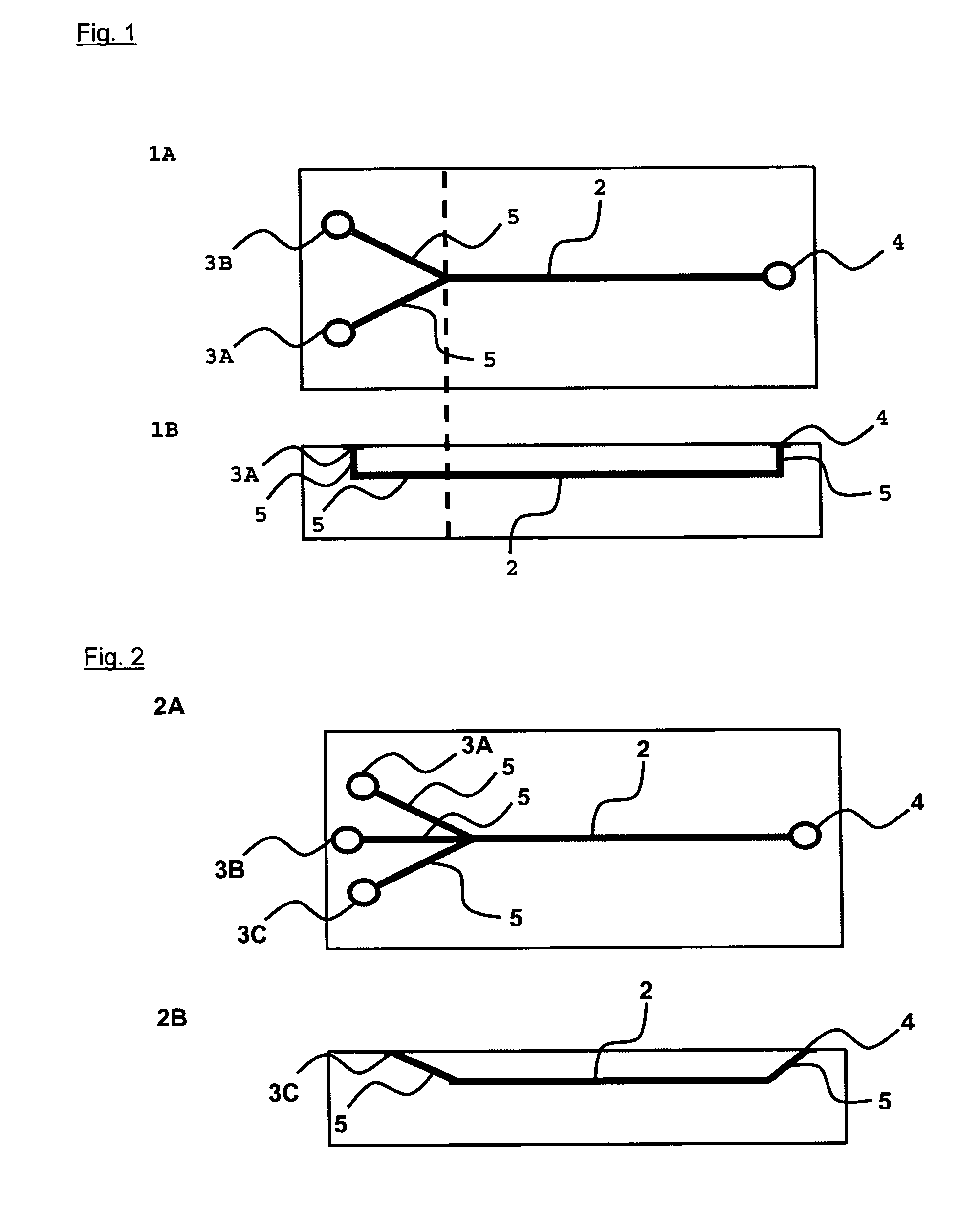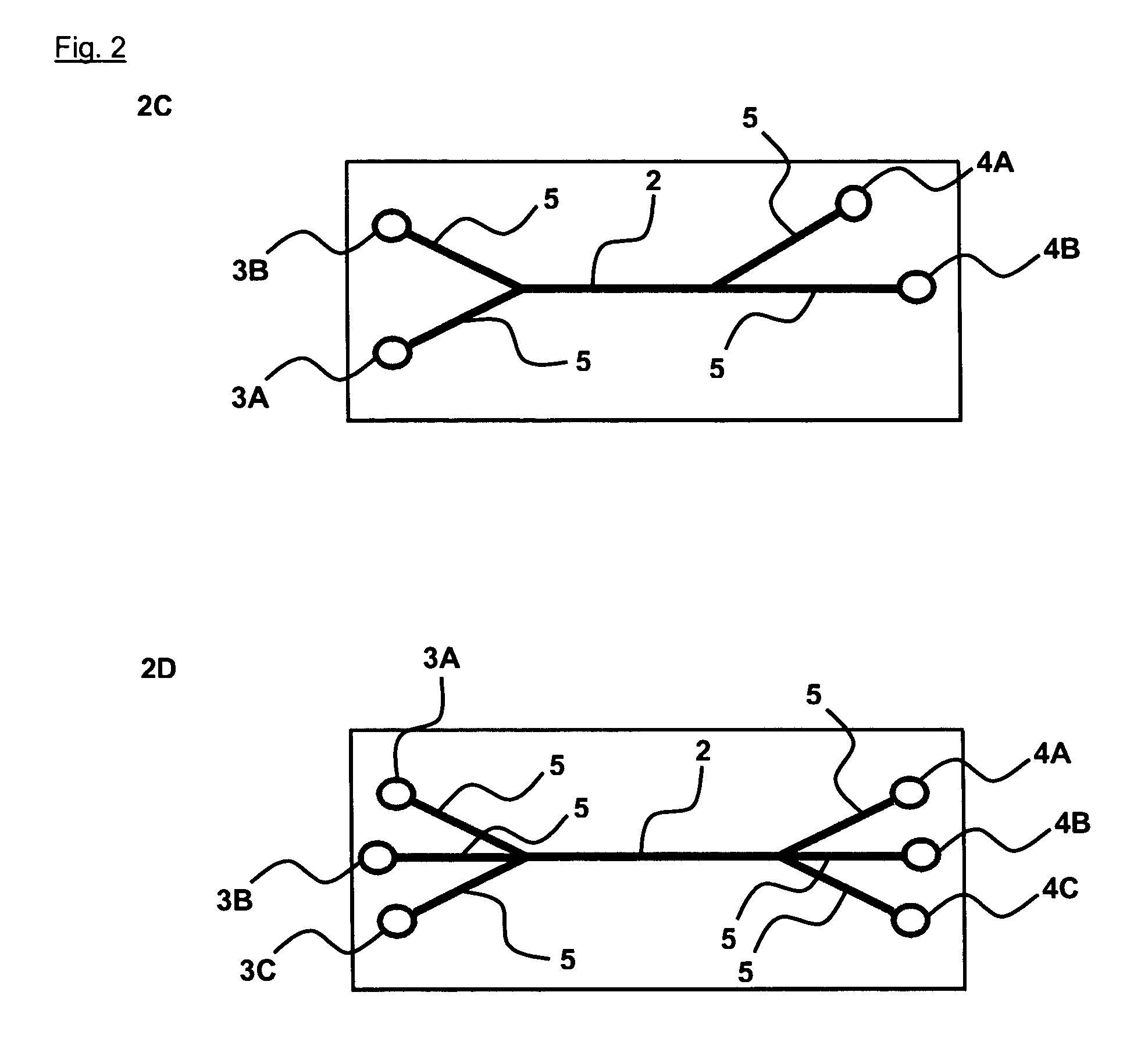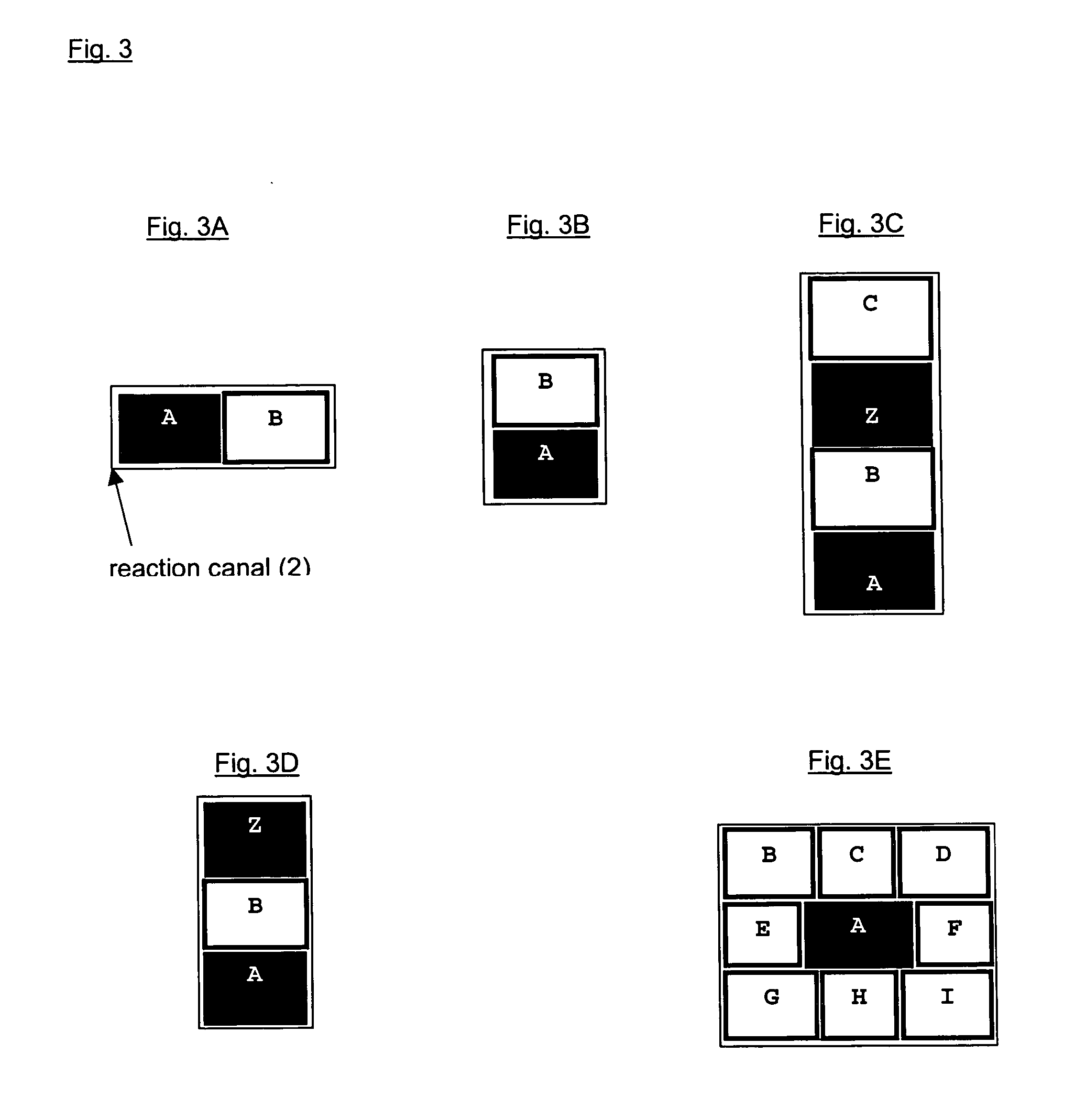Immobilization of cells in a matrix formed by biocompatible charged polymers under laminar flow conditions
a charge polymer and matrix technology, applied in the field of immobilization of cells in a matrix formed by biocompatible charged polymers under laminar flow conditions, can solve the problems of inability to manipulate or control the interaction of different cells, cell growth and prolongation of cell survival, and limited co-culture, etc., to achieve excellent stability of the polymer strip, improve the stability of the polymer, and improve the effect of cell survival
- Summary
- Abstract
- Description
- Claims
- Application Information
AI Technical Summary
Benefits of technology
Problems solved by technology
Method used
Image
Examples
example 1
[0064] Example 1 illustrates the in situ formation of a polymer matrix by laminar reaction of methylated (positively charged) collagen as second charged polymer and (negatively charged) terpolymer of hydroxylethyl methacrylate-methyl methacrylate-methyl acrylic acid (HEMA-MMA-MM) as first charged polymer under laminar flow conditions.
[0065] In this example two different combinations of this polymers are used that are composed of different concentrations of collagen and terpolymer of different molecular weight. The formation of a polymer matrix is based on the polyelectrolyte complex coacervation between cationic methylated collagen and anionic terpolymer of HEMA-MMA-MM. This polymer matrix has been shown to provide favorable three dimensional microenvironment for cell support and proliferation (Chia et al., Tissue Engineering 2000, Vol. 6(5), P. 481-495). Two different polymer combinations are used to illustrate the control of the structure of the polymer matrix formed using differ...
example 2
[0074] This example shows the ability of the three dimensional polymer matrix to be perfused with analyte containing liquid media. For this purpose, detoxification functions of hepatocytes embedded in a polymer matrix formed by laminar side-by-side flows (as schematically shown in FIG. 3A) of methylated collagen and terpolymer of hydroxylethyl methacrylate-methyl methacrylate-methyl acrylic acid (HEMA-MMA-MAA) were studied.
[0075] For this experiment, freshly isolated primary rat hepatocytes were suspended in methylated collagen, and the cell-containing methylated laminar collagen stream was complex coacervated with an adjacent laminar stream of terpolymer. The hepatocytes embedded in the formed polymer matrix were cultured for 24h and the hepatocytes detoxification functions assessed by their 7-ethoxyresorufin O-dealkylation (EROD) activities. The methylated collagen and the terpolymer HEMA-MMA-MAA used in this experiment were obtained as described in Example 1. Also the PDMS micro...
example 3
[0079] This example illustrates the use of the polyelectrolyte complex coacervation reaction between methylated collagen as second charged polymer and terpolymer of HEMA-MMA-MM as first charged polymer to manipulate the formation of collagen matrices which have an important bearing on cellular behavior. Collagen of different methylation degrees is used to complex coacervate with terpolymer to alter polymer matrix morphology to engineer microenvironments for optimal cell support. Two liver-derived model cell types, primary hepatocytes and HepG2 cell line are chosen to study the effect of polymer matrix morphology on cellular functions. Primary hepatocytes represent primary cells that are highly sensitive, terminally differentiated and require specific chemical and topological extra-cellular matrix (ECM) cues for the maintenance of differentiated functions in vitro, while HepG2 is a hepatic cell line that represents transformed cell lines which can proliferate relatively easily in cul...
PUM
 Login to View More
Login to View More Abstract
Description
Claims
Application Information
 Login to View More
Login to View More - R&D
- Intellectual Property
- Life Sciences
- Materials
- Tech Scout
- Unparalleled Data Quality
- Higher Quality Content
- 60% Fewer Hallucinations
Browse by: Latest US Patents, China's latest patents, Technical Efficacy Thesaurus, Application Domain, Technology Topic, Popular Technical Reports.
© 2025 PatSnap. All rights reserved.Legal|Privacy policy|Modern Slavery Act Transparency Statement|Sitemap|About US| Contact US: help@patsnap.com



